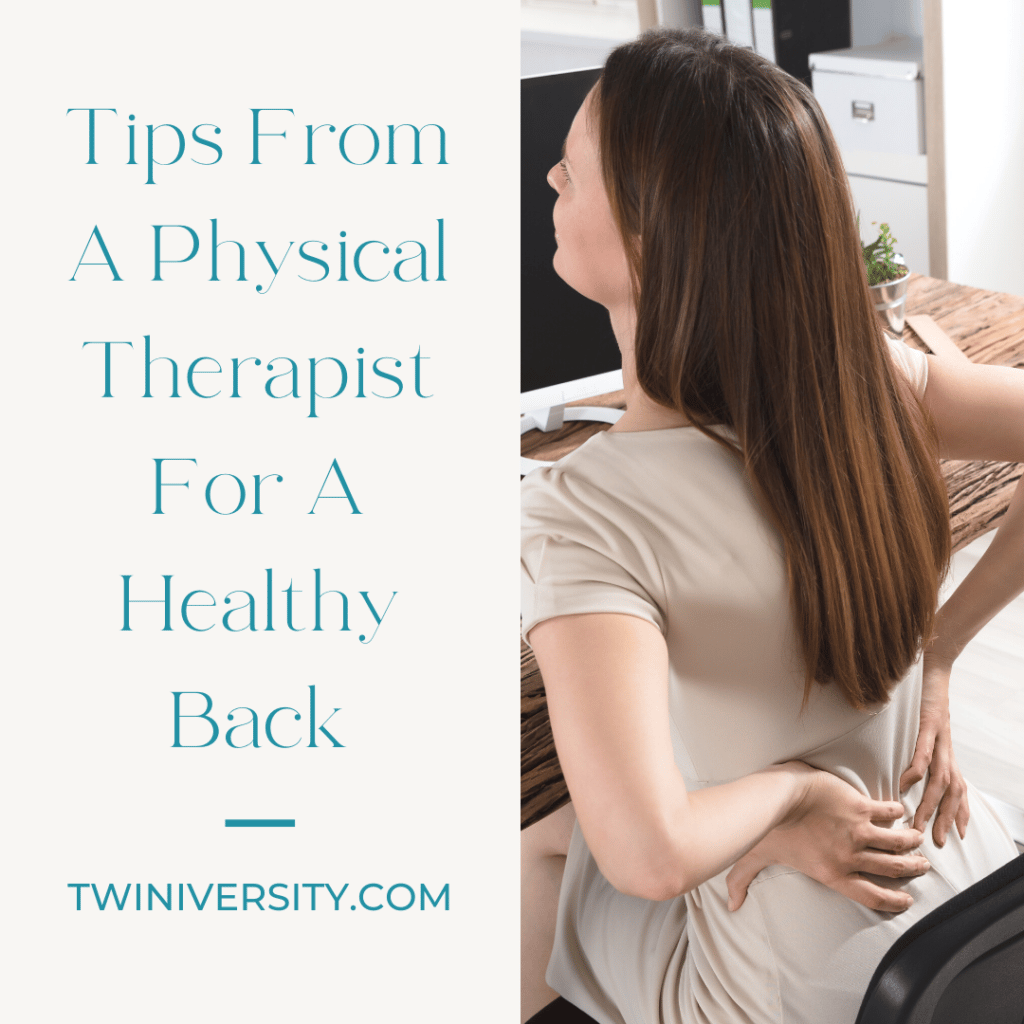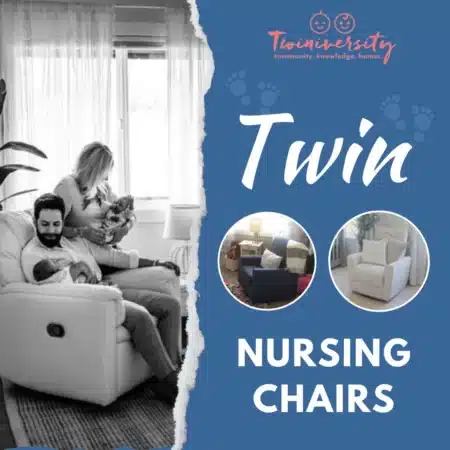Last updated on June 1st, 2022 at 10:15 am
Over 80% of the population experiences back pain at some point in their lives. Postpartum women are at an especially higher risk for many reasons, from the obvious abdominal weakness from diastasis recti to the deconditioning related to bed rest during pregnancy — not to mention the demand of caring for infants. Postpartum women are also at higher risk if they had back pain during their pregnancy. Pain and immobility can range from a slight discomfort to disabling pain, making women feel even more frustrated and overwhelmed with their present situation. Physical therapy can be an option to help manage the pain and prevent further injury.
The first step is not ignoring the pain. Back pain during and after pregnancy is common but NOT normal and there IS something that can be done. Common complaints include: buttock or hip pain, pubic or groin pain, tailbone pain, pain with changing positions, loose/weak joints causing popping and clicking, pain that extends into the groin or down the back of the leg, or feeling of the leg buckling all could indicate a pelvic joint problem. Pain that worsens with prolonged standing (postural), pain increasing with activities (mechanical), or dull ache in the lower back that worsens as the day goes on could indicate a lumbar spine problem.
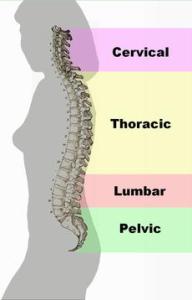
There are steps you can take if you are experiencing back pain, including ice/heat, massage, exercise, and most importantly consulting a physical therapist. Recent research evidence is showing that, what we call “passive modalities”, i.e. heat/ice/massage/TENS (electrical nerve stimulation), are basically the same as a placebo in regards to treating lower back pain. Moreover, an active approach with exercise/postural awareness is the most effective means to treat lower back pain. This is where a physical therapist can help. We have known for a long time that early intervention with patients with low back pain shortens duration of symptoms, improves treatment effectiveness, and decreases chronicity of symptoms. However, telling a new mom who has many priorities is difficult. Therefore it is recommended to consult a physical therapist if your back or pelvic pain is persistent for two weeks or more or if it interferes with daily function.
As mentioned previously, prevention is key to avoiding the start of back pain. The main concept is to keep in mind is “maintaining a neutral spine posture” during activities and positions. Too little or too much of a bend in your back can place your back at risk for injury.
Practicing this neutral spinal alignment with all activities like childcare, lifting, housework, computer work, etc will help to lower that risk. One would think that this concept would be intuitive, however the body wants to move through the path of least resistance (slouching while sitting is easier) without even realizing it.
Here are some general guidelines for Body Mechanics and Postural awareness strategies.
Sitting postures:

Computer posture:

For those using laptops, I often emphasize the need to place the laptop on a table (sometimes with a book underneath the laptop) and sit in a proper chair. Often we fall into the habit of using the laptop on our laps sitting on the couch.
Driving posture:
For sitting in the car, ensure that your back is straight and there is a lumbar support within the small of your back.

Sleeping posture:
Pillow in between your knees is good practice for proper spinal alignment, along with pillow(s) under the arm. Do not use too many pillows under the head.

Proper Transfer techniques (getting out of bed or out of a chair):
LOG ROLL method: Roll all the way over to your side. Legs off the bed then use arms to push yourself.
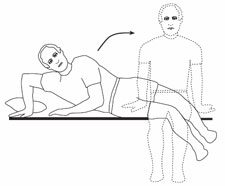
With getting out of a seat, make sure both feet are flat on the ground, your bottom is at the edge of the chair, then rise to stand leaning forward at your waist, not bending at your back.
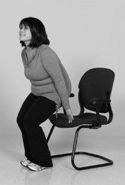
Rising from the floor should be done in a half kneeling position (Figure B), not pulling oneself up (Figure A).
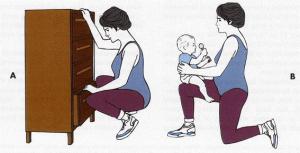
Proper Lifting Techniques:
Bending at the knees and at the waist will maintain a neutral alignment with your spine. This should also be done with lifting a car seat.
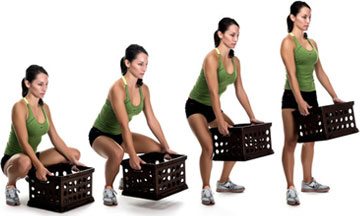
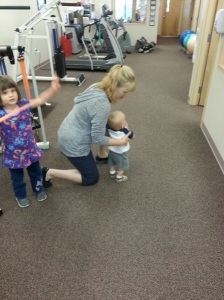
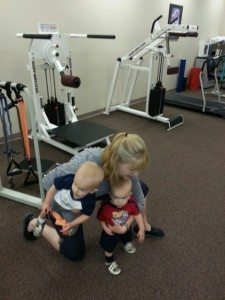
Lifting children from a crib or changing table can also be done with a neutral spinal alignment. It is best to bend at your hips and at your knees with the child close to you when lifting from the changing table or from the crib.
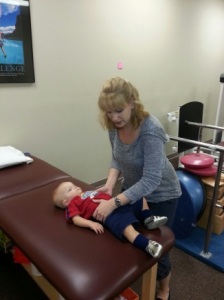
Body Stances:
Your everyday activities also need to be monitored for postural control.
For washing dishes it is suggested to open the cabinet underneath the sink and rest your foot inside the cabinet to improve posture.
For sweeping and vacuuming, it is better to bend your knees and hips and take steps moving your legs, instead of just bending at your back repetitively.
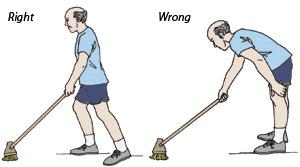
For putting on your shoes, bend your leg up towards you; do not bend forward at your waist lowering your trunk to the ground.
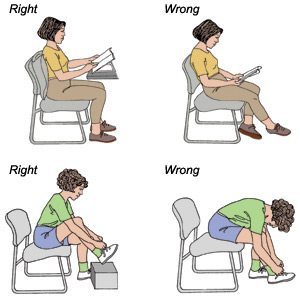
More on Child Care:
When holding your child, make sure you are carrying him/her either in the front of your body or on the side without pushing out your hip. Try using a carrier when carrying a baby, such as the Moby wrap or Ergo (which only hold one baby of course). Carry only what is necessary at the time in the diaper bag or try a backpack. I often lift people’s purses and bags when evaluating them to make them realize how much extra weight is in those bags.
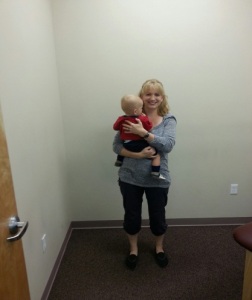
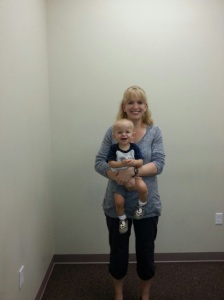
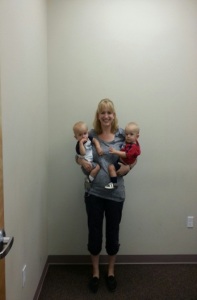
With feeding, support your baby with a pillow or nursing pillow. Trying other nursing positions like side-lying or football hold. Sit straight and tall with pillows supporting your back to bring babies to breast/bottle, not bottle/breast to baby.
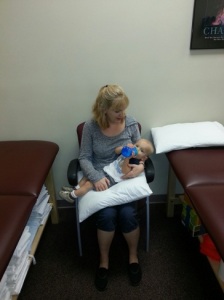
Do not do this
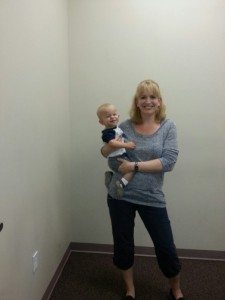
The take home message is that although back pain is very common it is NOT normal. There are many ways to prevent back pain however proper posture and body mechanics are not intuitive concepts. If back pain persists for more than two weeks, it is recommended to see a physical therapist.
Depending on the state you live, many physical therapists can see patients without a referral from their physician with a direct access license. Also available in many areas are physical therapists that specialize in women’s health, like myself. These physical therapists have had specific training on the changes a woman’s body undergoes with pregnancy/postpartum/childcare/aging. They treat symptoms of incontinence (fecal or urine), gastrointestinal issues, and pelvic pain/dyspareunia (painful intercourse), and other specific complaints related to women. Our governing body, the American Physical Therapy Association, has a link on their website for “find a PT” that can offer a PT that is close to your home at www.apta.org. If you have any of these symptoms there is help out there. Please ask questions. You are your best advocate!
Carolyn R. Wincer, PT, DPT, CLT-LANA, OCS, is married with a four-year-old daughter and twin toddler boys. She has been a physical therapist for ten years and is the facility director of a physical therapy clinic. The letters after her name mean: DPT = doctorate of physical therapy, CLT-LANA = certified lymphedema therapist, OCS = board certified in orthopedics.

